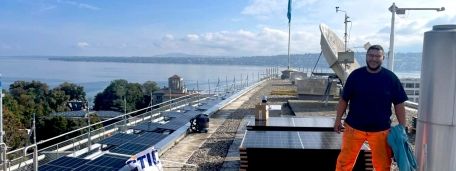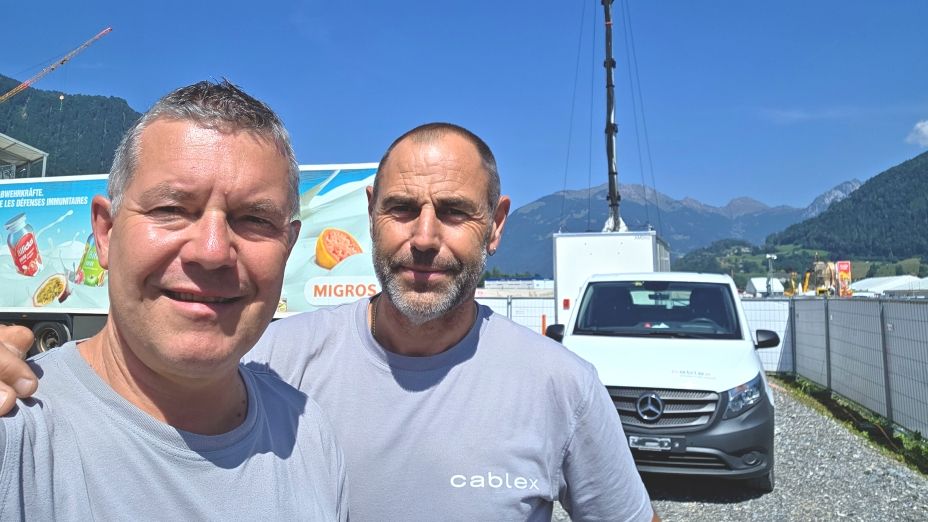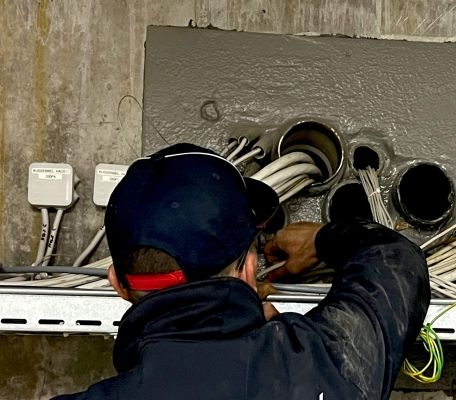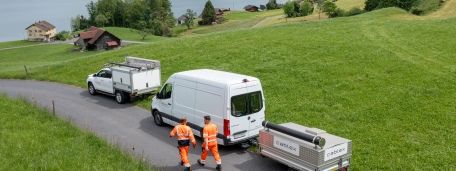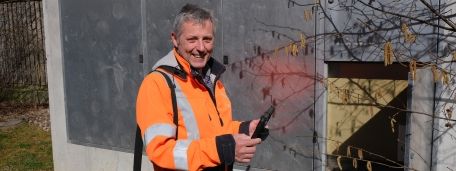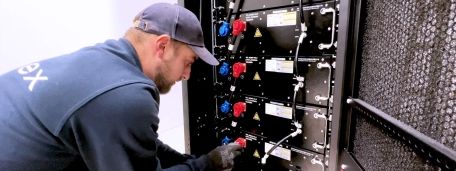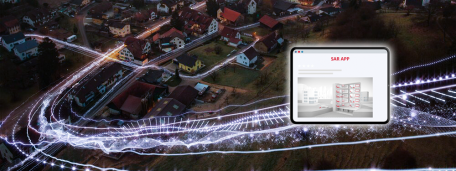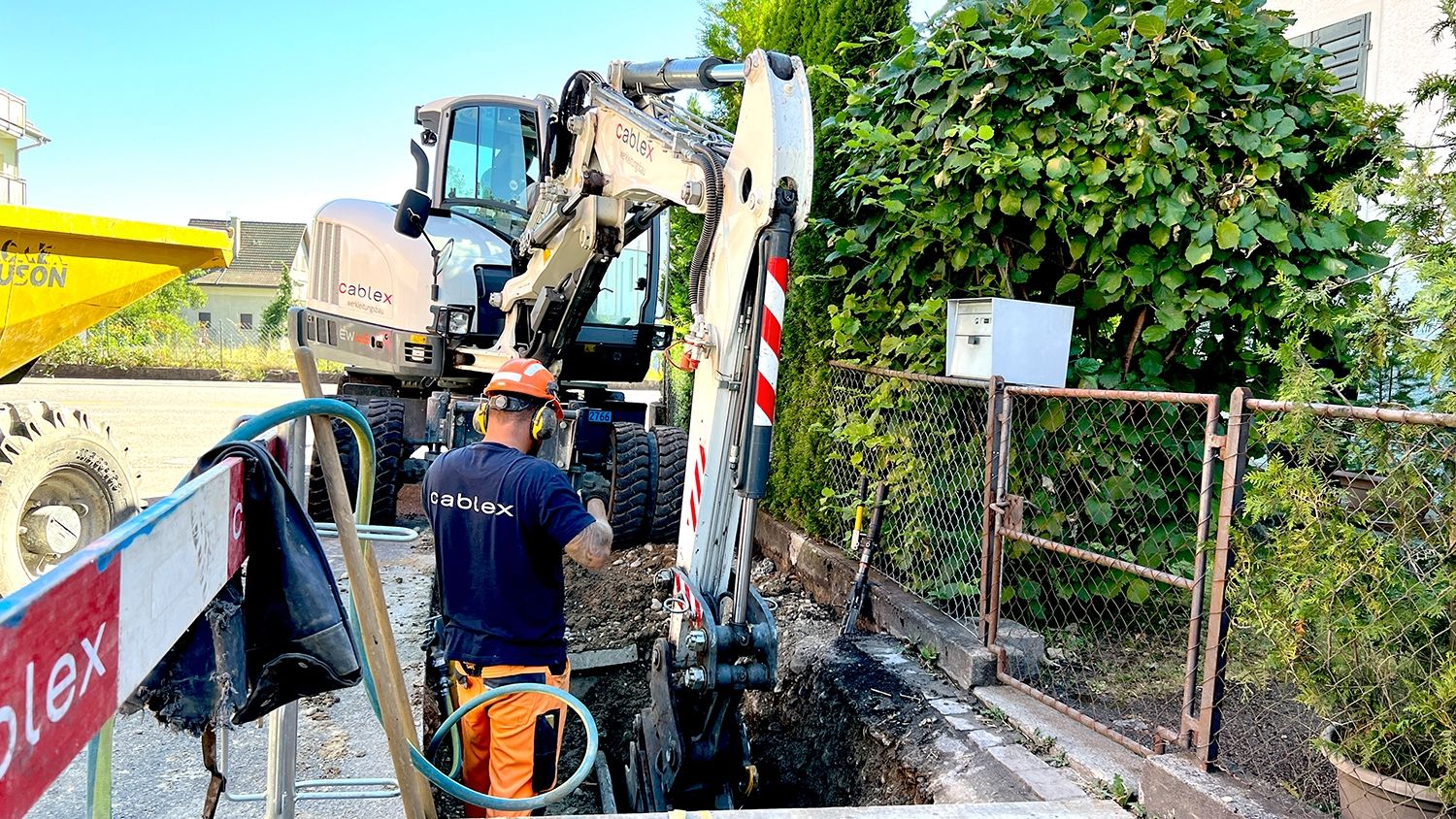
Customers trust in the versatility of cablex.
There is no more room in the cable pipes in Panamaweg in Suhr (AG). Construction work was therefore necessary in connection with the expansion of the optical fibre network in the community. Thanks to the versatility of the cablex civil works team and the trusting relationship with the customer and construction management, cablex was awarded the contract for several renovation projects.

cablex has an extensive portfolio of services that goes far beyond its core business of "network infrastructure and service". And this is an interesting added value aspect for many customers: One contact person is responsible for the implementation of several construction activities. This shortens communication channels and simplifies planning as well as cost control. The network construction project in Suhr illustrates how this also works in the infrastructure area.
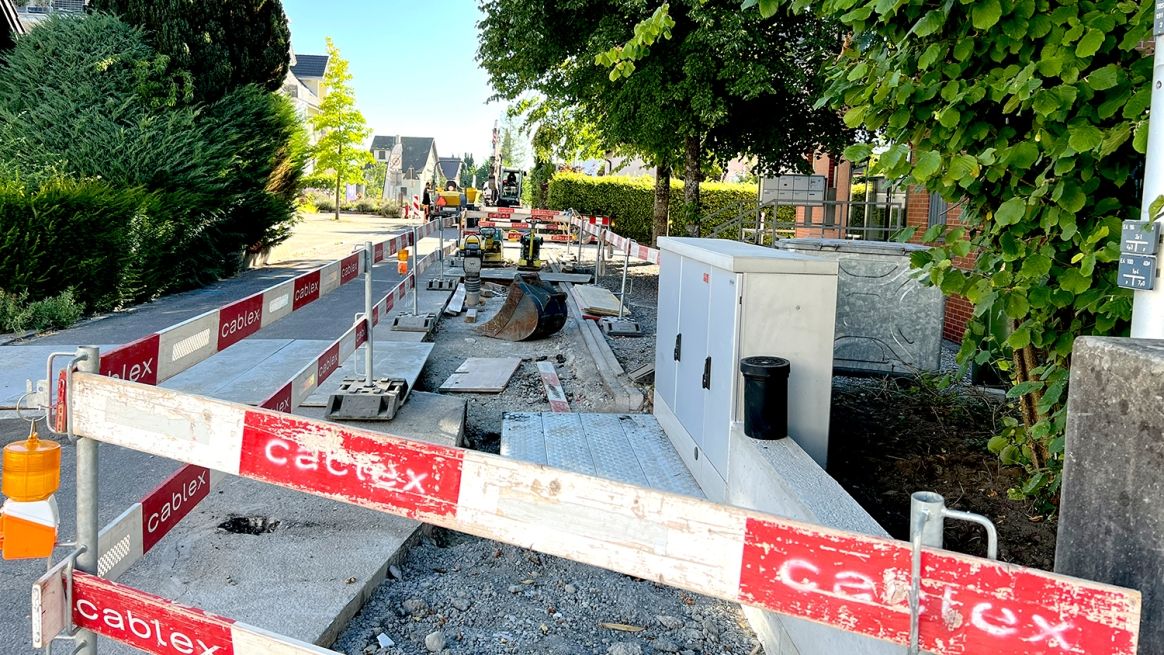
Customer - Technische Betriebe Suhr AG.
It's summer, it's hot and the Panamaweg in Suhr (AG) looks like a large construction site. The asphalt has been broken up, deep trenches and barriers can be seen all over the side road as well as the construction machines of the cablex civil work team. There's a lot to do!
Civil works renovation activities on the electricity and water infrastructure.
On behalf of Technische Betriebe Suhr Strom AG, cablex is laying a new 140-metre-long conduit block. Seven new polyethylene pipes are placed into the ground. From now on, the power cables for the public lighting will run through these and, depending on the planning, also the optical fibre cables for the high-speed Internet at some time in the future. In addition to this, new circular manholes are being built and a distribution box replaced.
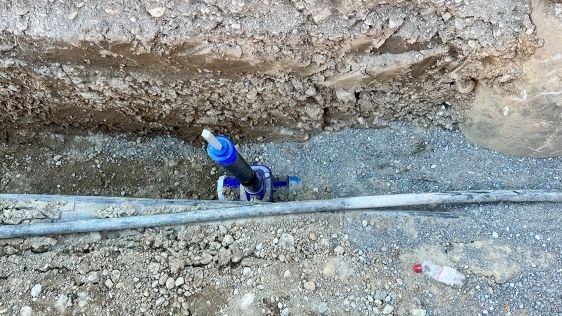
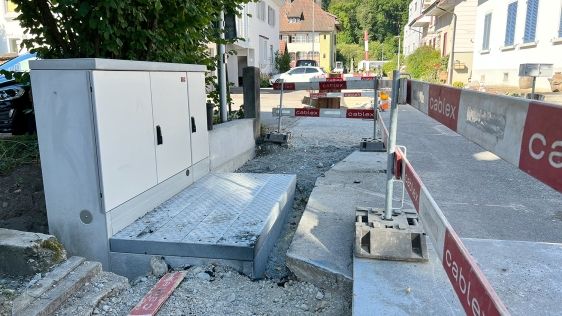
At the same time, a new water pipe will be laid in the ground for Technische Betriebe Suhr Wasser AG. Since the water pipes are located deeper than the power lines, cablex has dug a two-metre wide step trench.
Customer - Swisscom.
After receiving a request from the construction management firm, Ballmer und Partner AG, it turned out that Swisscom also needed lay four additional pipes in the trench. This contract was also awarded to cablex.
Customer - Suhr local authority.
Due to the trench width of around 2 m and a road width of 5.20 m, it was necessary to restore the asphalting on the construction side after the work was completed. However, the Suhr local authority decided to renew the road surface over the entire width and length of the street, and cablex was awarded another additional contract in this project.
The road surface stages were planned in such a way that 30 tonnes of asphalt could be used in each stage. The road surface was laid mechanically with a Vögele Super 800i machine.
An exciting video is waiting for you here!
Activate the marketing cookies to play the video.
Restoration of the road surface in quick stages.

